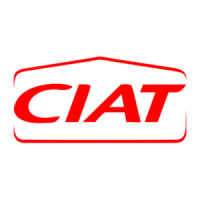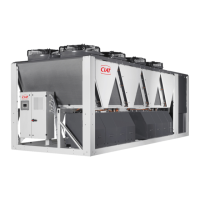Why is the discharge pressure excessive in my CIAT DYNACIAT POWER LG Industrial Equipment?
- PPeter DuranAug 3, 2025
If the discharge pressure of your CIAT Industrial Equipment is excessively high, several factors could be at play. It could be due to air in the hot water circuit, which requires draining the hot water circuit. Insufficient hot water flow rate can also cause this, so check the opening of the hot water circuit valves. If the cooling water flow rate is sufficient but the water temperature is too high, verify the correct operation of the regulator and setpoint adjustment. Issues with the tower or drycooler operation, a fouled or scaled condenser (requiring cleaning of the condenser tubes), or too much refrigerant (necessitating a check and adjustment of the load) can also lead to excessive discharge pressure.


